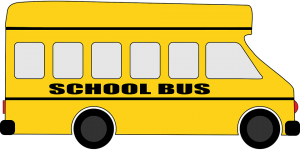
A Brief History
Blaise Pascal, a famous mathematician, started the first bus service in 1662. The first internal combustion engine buses, or motor buses, were used in 1895. Verna Hills wrote, “The Wheels On the Bus” by 1939; the exact date is not known. It is sung all over the world in several languages. Many kids, from other countries, will be able to recognize the song even if neither one of you is certain which verse the other is singing. Some people think it’s based on another popular song, “Here We Go Round the Mulberry Bush”. It can be sung in rounds and by large groups of people like, “99 Bottles of Beer” but is much less annoying even if sung till the end.
Like all great children’s songs, “The Wheels On the Bus”, has some well-known verses:
- The horn on the bus goes beep…
- The People on the bus go up and down….
- The wipers on the bus go swish… (That’s a new one for me, personally.)
and also, like many of this type of classic song, verses are easy to make up. One of my favorites is, “The driver on the bus says move on back, move on back, move on back!” This one can be performed in polite, on up to comically rude, tones of voice.
What Does It Accomplish?
Music has always been a great learning tool, especially before reading and writing were developed. Technology has done much to raise our standard of living but we still use screwdrivers and hammers. Singing and dancing together is a bedrock tool for learning social interaction. It is also a great way for toddlers to learn some advanced social skills and even gain knowledge of the world around them that they will think they always knew when they grow up. You probably think you always knew how to keep time, improvise, make coordinated movements, and work with others but you probably initially learned most of these skills singing this song or one like it.
There are many stages of learning, involved with a song like this. You will notice younger kids’ amazement that you are singing and able to memorize a song; they will think you created it-try not to let it go to your head. You will see the enjoyment of a child realizing they have mastered the song. You can experience the agony of defeat when the verses make no sense and the joy of creating as you yourself and the children come up with new verses. You can create actions together. You will get to be surprised when they come up with creative actions and they will get to enjoy your surprise and approval. This learning process will teach them logic and association. They will begin to see similarities and differences in different objects and situations. If you have a particularly in tune group you may be able to create together verses that are directly related to your classroom setting or even the purpose of your meeting together.